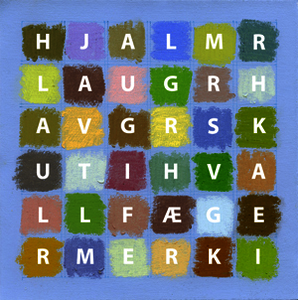Wordsworth and Basho: Walking Poets
Collier, Mike, Clayton, Ewan, Cockburn, Ken, cowton, Jeff, Flint-Sato, Christine, Kunial, Zaffar, Kono, Eiichi, Ling, Manny, Mchugh, Chris, Monta, Nobuya, Panneels, Inge, Richardson, Andrew, Sakamoto, Nao, Skelton, Richard, Richardson, Autumn, Tani, Ayako, Thompson, Brian and Mckay, Carol (2014) Wordsworth and Basho: Walking Poets. May - Nov 2014, Dove Cottage: The Wordsworth Museum.
| Item Type: | Show/Exhibition |
|---|
Abstract
This exhibition of manuscripts (original and facsimile copies) of William Wordsworth and Matsuo Basho, shown alongside work by contemporary UK and Japanese artists working individually and collaboratively (painters, poets, musicians, sculptors and calligraphers), aims to show that there is much to be gained by comparing and contrasting Eastern (Japanese) and Western (Romantic) views of nature.
Working from the original manuscripts of Wordsworth and the romantic poets held by the Wordsworth Trust and both original or facsimile copies of texts by the Haiku master, Matsuo Basho and his contemporaries, the show will emphasize the importance of reflecting upon our emotional response to nature. It will argue for a rebalancing a view of the world that has, since the Enlightenment, placed greater importance on measuring and recording experience, whilst de-valuing our emotional responses to the natural world.
The exhibition focuses on two related themes. Related in that they explore the importance of re-developing an embodied relationship to our environment.
Firstly, it explores a relationship between the act of walking and creating (art) through the work of two inveterate walker/poets – Wordsworth and Basho. Thomas De Quincey reckoned that Wordsworth “must have traversed a distance of 175,000 to 180,000 English miles - a mode of exertion which, to him, stood in the stead of alcohol and all other stimulants whatsoever to the animal spirits; to which, indeed, he was indebted for a life of unclouded happiness, and we for much of what is most excellent in his writings."
Two of the most important experiences related in The Prelude, for instance, found their origins in mountain walks (when overawed by the Ravine of Gondo, the “gloomy Pass” and during a night walk to the top of Snowdon).
Basho’s art reached its greatest form during his five-month trip to the Deep North in 1689, during which he wrote his masterpiece The Narrow Road to the Deep North. In this poem/travel book,he recounts the last long walk he completed with his disciple Sora—some 1,200 miles covered over five months beginning in May 1689.
Secondly, the exhibition proposes that there is a close relationship to the form and framing of the script used by Wordsworth and Basho and the landscapes (natural and social) in which the texts were written and through which the writers/poets walked. The exhibition will explore the idea developed by writers such as Coleridge and Wordsworth that there is a specific relationship between the word used to describe an object or thing and the object itself – a poetic, embodied relationship. Coleridge believed that ‘words can embody and not just stand for thoughts and things’ … and he ‘puts his faith in words as “living things” – as plants, as live bodies.
Indeed, one the artists in the show (calligrapher Ewan Clayton), has a long-standing interest in the calligraphy and writing of the Far East (including the poetry and manuscripts of Basho). In his recent book (The Golden Thread – The Story of Writing), he explores how the ‘experience of sensing movement in the natural world and transferring it into the felt movement of writing is shared across many traditions’ … both East and West. Basho and Wordsworth explored the world by walking through it – and their resulting embodied experiences were mediated by the medium of pen or brush on paper.
A series of new essays in an accompanying publication will expand on many of these issues as well as exploring the relationship of the self to the world – reflecting on the similarities and differences between the Romantics’ embodied view of the world and the Japanese (Eastern, Buddhist) view of the self’s ‘emptying-out’.
The idea for this exhibition arose, initially from a study produced by the Wordsworth Trust and the Arts Council called Beyond Words: Understanding and Sharing the Meaning of Manuscripts. In it Jeff Cowton, Curator at The Wordsworth Trust, described handwriting as a visual form which can ‘mimic the texture of thought’, revealing valuable clues as to the state of mind of the creator.
![SKYLARKBLUEps.jpg [thumbnail of SKYLARKBLUEps.jpg]](https://sure.sunderland.ac.uk/4681/1.hassmallThumbnailVersion/SKYLARKBLUEps.jpg)  Preview |
Image (JPEG)
SKYLARKBLUEps.jpg Download (27kB) | Preview |
![WORDSWORTHCELENDINE-01_0.jpg [thumbnail of WORDSWORTHCELENDINE-01_0.jpg]](https://sure.sunderland.ac.uk/4681/2.hassmallThumbnailVersion/WORDSWORTHCELENDINE-01_0.jpg)  Preview |
Image (JPEG)
WORDSWORTHCELENDINE-01_0.jpg Download (30kB) | Preview |
![Wheatersmall.jpg [thumbnail of Wheatersmall.jpg]](https://sure.sunderland.ac.uk/4681/3.hassmallThumbnailVersion/Wheatersmall.jpg)  Preview |
Image (JPEG)
Wheatersmall.jpg Download (26kB) | Preview |
![WordsworthJoannasmall.jpg [thumbnail of WordsworthJoannasmall.jpg]](https://sure.sunderland.ac.uk/4681/4.hassmallThumbnailVersion/WordsworthJoannasmall.jpg)  Preview |
Image (JPEG)
WordsworthJoannasmall.jpg Download (112kB) | Preview |
More Information
| Related URLs: |
| Depositing User: Ashleigh Little |
Identifiers
| Item ID: 4681 |
| URI: http://sure.sunderland.ac.uk/id/eprint/4681 | Official URL: http://walk.uk.net/portfolio/wordsworth-and-basho-... |
Users with ORCIDS
Catalogue record
| Date Deposited: 24 Feb 2014 13:05 |
| Last Modified: 03 Jun 2025 14:10 |
| Author: |
Ewan Clayton

|
| Author: | Mike Collier |
| Author: | Ken Cockburn |
| Author: | Jeff cowton |
| Author: | Christine Flint-Sato |
| Author: | Zaffar Kunial |
| Author: | Eiichi Kono |
| Author: | Manny Ling |
| Author: | Chris Mchugh |
| Author: | Nobuya Monta |
| Author: | Inge Panneels |
| Author: | Andrew Richardson |
| Author: | Nao Sakamoto |
| Author: | Richard Skelton |
| Author: | Autumn Richardson |
| Author: | Ayako Tani |
| Author: | Brian Thompson |
| Author: | Carol Mckay |
University Divisions
Faculty of Education, Society and Creative Industries > School of Media and Creative IndustriesFaculty of Education, Society and Creative Industries
Subjects
Fine Art > Art in ContextActions (login required)
 |
View Item (Repository Staff Only) |

